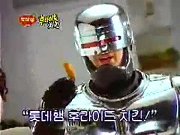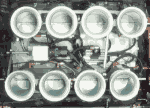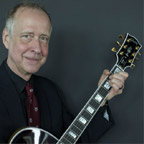|
These little engine videos always entertain me: https://www.youtube.com/watch?v=sZF6BZeWvUw Suck, Squeeze, Bang, Blow.
|
|
|
|

|
| # ? May 5, 2024 08:03 |
|
Vanagoon posted:These little engine videos always entertain me: A singular main bearing set? Interesting. E: Shouldn't the injectors fire during the intake valve opening for proper mixture? CommieGIR fucked around with this message at 18:25 on Nov 30, 2014 |
|
|
|
CommieGIR posted:A singular main bearing set? Interesting. a lot of modern car engines do it. most 4t motorcycle engine cases assemble in the same manor. smaller 1 cylinder bikes have the case halves vertical instead of horizontal, and use roller bearings for mains.
|
|
|
|
CommieGIR posted:A singular main bearing set? Interesting. Not Quite. They are spraying the liquid gas onto the hot valves so it vaporizes then the vapor is pulled into the cylinder. Sadi posted:I'd be interesting in hearing about those topics. They are certainly things my school managed to skip over. I've got basics about bearings and lubrication but it's mostly from supplier texts and tribal knowledge. I will do a short write up tomorrow, anything in particular you'd like to know? My main knowledge currently is 2 vs 3 later bearings (and babbitt). If you want to know something about oil grades or gas vs diesel oils I need to talk to one of my professors after class tomorrow.
|
|
|
|
Can someone talk about Torque a little? I know it's rotational force, and not being an engineer of any sort, I've been lead to believe that a car's torque value is almost more important than raw horsepower? Why do electric engines and turbo's create so much of it easily? How do NA cars make up for neither of those being present, what other ways do they create it?
|
|
|
|
Binge posted:Can someone talk about Torque a little? I know it's rotational force, and not being an engineer of any sort, I've been lead to believe that a car's torque value is almost more important than raw horsepower? Why do electric engines and turbo's create so much of it easily? How do NA cars make up for neither of those being present, what other ways do they create it? Another ME student chiming in here, I graduate in April. For rotation, power is torque times revs. An engine with a lot of horsepower can also make a lot of torque, for a given road speed, if you rev the crap out of the engine. The torque curve is whats important, that is how much torque an engine makes at a given RPM at wide open throttle. Horsepower and torque ratings are mostly just to give you a general idea of the way a given engine delivers torque based on engine speed. Electric engines make a lot of torque because the systems that control the electric motor are designed in such a way to deliver a specific power output to the engine without overheating. This coupled with electric motors not needing transmissions mean you can get peak power all the time which for a low road speed means a lot of torque. If a gasoline motor has a continuously variable transmission then it can also be operated at peak power at low road speeds which is exactly the same as saying that it can make a lot of torque at low road speeds. Turbocharged engines make a lot of torque because they force air and fuel into the engine at pressures greater than atmospheric pressure. For arguments sake, a naturally aspirated engine operates at absolute pressures between a complete vacuum and atmospheric pressure. A turbo or supercharger forces more air and thus more fuel into the engine making more powerful internal combustion which is what makes torque in engines. For a given torque curve, an NA engine can make up for a lack of torque this by having more gear ratios or using CVTs. Long story shot: torque is the force that moves the car, horsepower is torque when you exploit gearing. I probably wasn't very clear on this, if you have more questions don't hesitate to ask.
|
|
|
|
I'll give it a shot too. Torque is basically force times distance. Think of using a cheater bar on a socket wrench to loosen a particularly stubborn bolt. You can only produce so much force at the end of the lever, but if you make the lever longer, you are effectively producing more torque on the bolt, and can break it loose. Horsepower is dependent upon torque and RPM. It's effectively a measure of "useful torque". Kinda. Think of torque in terms of the force something is applying - high torque can move heavy loads and spin tires. Horsepower is a measurement of power. Power is energy expended or consumed per unit time. This is where gearing comes into play as SanitysEdge mentioned. Power is dependent on speed and torque. Make the same torque at a higher rpm and you produce more work.
|
|
|
|
SanitysEdge posted:Another ME student chiming in here, I graduate in April. Just to add to this - horsepower, or any power measurement (i.e. watts) is a rate of work. For example the change in kinetic energy from accelerating from a lower speed to a higher speed would be certain amount of work - this change in velocity being performed in a certain period of time would require power equivalent to the work required divided by the time it takes. You can obtain the horsepower at a given RPM by multiplying the torque produced by the RPM and dividing by 5252. I would clarify that an NA engine producing less torque but equivalent horsepower (at a higher RPM by the nature of the torque/horsepower relationship) to a turbocharged engine with more torque would in theory have different gear ratios in order to optimize the available horsepower at usable speeds for a given gear. I.e. the engine would be at a higher ROM for a given road speed. I say in theory as this is a pretty vast simplification but hopefully it helps to understand.
|
|
|
|
Something I picked up off oooooold truck techs. HP determines how fast you can climb the hill. Torque determines if you can climb the hill. E: another one: Definition of torque is trying to piss in the mornings with wood. cursedshitbox fucked around with this message at 04:02 on Dec 1, 2014 |
|
|
|
cursedshitbox posted:Something I picked up off oooooold truck techs. That's not a bad way of explaining it.
|
|
|
|
Some more stuff about electric motors in general, and in vehicles specifically. Electric motors produce their maximum torque when stopped. They make progressively less torque the faster they spin, due to magnetics. Common DC motors can make up to 400% or more of their "rated" torque at zero speed. They do this by drawing 1000% or more of their "rated" current. So if you look at the side of a motor and it says 5A, 1HP@3600RPM (common values). It's producing roughly 1.5ft*lb of torque at speed, consuming about 5A. However, when the motor is first switched on, it can pull up to 50A (very briefly) and produce 6ft*lb. With motors as used in vehicles, two things prevent a motor from going faster or making more power: the amount of current the batteries can supply, and the heat generated by the motor. At low speeds, the motor controller limits the current delivered to the motor. At higher speeds, adding more current generates more heat. A Prius's electric motor has something like 300 ft*lb at 0 RPM and 85 ft*lb at 4000rpm. 300 ft*lb is no slouch for a motor marketed as 70HP. The upside to all this electric motor stuff is that if your wheel doesn't need to spin all that fast, like electric scooters, you don't need any sort of gearbox. 0-8kRPM can all be handled by electronics. The "power band" on your motor is ridiculously wide. If it needs to spin a bit faster (like a motorcycle) then a simple planetary gearset (basically a two-speed automatic) can get you there. Speaking of electric scooters. Torque definitely says whether or not you can do something, and horsepower how fast. With full batteries @36V, my little scooter could move at barely a walking pace up a light incline. With half-full batteries, it could only make noise. babyeatingpsychopath fucked around with this message at 05:23 on Dec 1, 2014 |
|
|
|
cursedshitbox posted:Something I picked up off oooooold truck techs. Understeer is when you hit the wall with your front end Oversteer is when you hit the wall with your rear end Horsepower determines how fast you hit the wall Torque determines how far you take the wall with you
|
|
|
|
I hate that saying because (1/2)mv^2 determines how far the wall moves. 
|
|
|
|
FatCow posted:I hate that saying, because (1/2)mv^2 determines how far the wall moves. Yeah, I should have put in a footnote about that but was feeling lazy.
|
|
|
|
babyeatingpsychopath posted:Some more stuff about electric motors in general, and in vehicles specifically. This is not true of induction motors. The breakdown torque is higher than the locked rotor torque. On another topic, most people do not realise how a bolted joint works. This site has a decent summary: http://www.boltscience.com/pages/basics1.htm
|
|
|
|
Vanagoon posted:These little engine videos always entertain me: Here's one from Nissan with variable cam timing, direct injection strategies and turbocharging goodies included: https://www.youtube.com/watch?v=R8D8thlSn5Y
|
|
|
|
The Basics of Bearings To work effectively a bearing must be strong and soft. Strong to withstand the crank loadings and long term wear resistance; but they must also be soft enough to conform to both engine and crank/rod surfaces. To achieve this bearings are composites, generally two or three layer. Historically bearings were a simple babbitt, lead was poured into the cast iron. The cast iron held the shape and the soft lead allowed the assembly to spin with less friction. These bearing types are common in anything pre 1950’s basically. Especially old tractors, John Deere ARs have a 309 cu in 2 cylinder, the lead was poured with a nearly ½ inch wall, 4 inch diameter and 2 inch width on the largest main bearing. If you want to see it in action, here is a guy babbitting the rod bearings for a 1929 Oldsmobile in his garage. https://www.youtube.com/watch?v=HYtgkPF9ekQ Today most bearings used are Bi-Metal (King) or Tri-metal (Clevite 77) Bi-Metal Bearings Bi-Metal bearings have three layers, a steel back, an aluminum bonding layer and an aluminum bearing. The aluminum bearing material is typically alloyed with tin. Tin will act as a lubricant because of its conformability (its soft). Aluminum may also be alloyed with silicone for an abrasive to polish the journal surface (only applicable to cast iron cranks), copper and nickel may also be added for extra strength. Tri-Metal Bearings Tri-metal bearing have different alloy to make up the bearing. They have a steel back for rigidity, then a copper/lead/tin alloy for softness and finally a Babbitt layer to even out surface finish and reduce friction. The thickness of the Babbitt decreases load carrying capacity, so it is often made as thin as possible. In race engine bearings the lead Babbitt is removed and each manufacturer has their own replacement (if I had to guess it would be an aluminum/tin layer like Bi-Metal bearings). Tri-metal bearings have lower friction when lubricated, but fail faster without oil. Bi-metals last longer, but cannot be used for high performance. King compares the two very well in this document. http://kingbearings.com/files/Engine_Bearing_Materials.pdf Under normal operation the crankshaft and rods actually float on a layer of oil. Connecting rods have to be installed a specific way (in American V8’s at least to my knowledge) to allow oil to flow between them. Bearing surfaces are smooth enough to allow oil to flow with ease, but rough enough to hold oil in the bearing; at least enough for startup. That being said it does take time for oil to reach full pressure in all locations, and an oil change never drains all the oil. Everyone makes bearing selection sound difficult, but it boils down to this: Turbo/supercharged? Diesel? High Compression (above 10:1)? Tri-Metal Naturally aspirated gas engine? Bi-Metal If you have anymore questions/need clarification please ask. I wrote this out after finishing a Fluid Mechanics exam, so I may have glazed over some details.
|
|
|
|
Why does torque start to decline at some high rpm on gas engines?
|
|
|
|
SperginMcBadposter posted:Why does torque start to decline at some high rpm on gas engines? Volumetric Efficiency. The rpm where they engine is most efficient is where it will make the most torque. Efficient means drawing the most air into the cylinder per cycle, and is a factor of the head design, cam timing, cam profile, intake manifold, and exhaust. So for a given combination of all those factors there will be a point of peak efficiency somewhere in the rpm range. Now, engines have variable cam timing and lift in order to extend the range of peak efficiency.
|
|
|
|
SperginMcBadposter posted:Why does torque start to decline at some high rpm on gas engines? Any engine is going to hit a rpm range where the airflow through it starts to become restricted by a combination of intake, exhaust, and head design, camshaft profile, etc. This restriction limits how much air and fuel can be burned, which reduces the amount of torque that is able to be produced.
|
|
|
|
Engine simply can't breathe fast enough to get a useful charge in the cylinder. On a naturally aspirated engine, the cylinder creates a vacuum (0 psi absolute pressure), which is immediately filled by inrushing air at 1 atmosphere, or 14.7 psi. That is the maximum pressure differential you can achieve, and given a certain port size there is a maximum amount of air that can flow through that in a given amount of time; heads in the US are usually rated in cubic feet per minute (cfm) at atmospheric pressure. The more revolutions per minute (each requiring the same amount of air per firing), the more airflow you need, and once that number exceeds the rated CFM each cylinder gets less and less % of the total air mass it could theoretically hold, causing power to drop off in proportion. Eventually power output drops until it matches the load on the engine. That said, it's fairly easy to machine heads out for more airflow and increase the max RPM in that respect. Where most engines fail first is in the valvetrain; moving the valves back and forth takes fairly little effort to begin with, but remember, KE=mv2. That means the kinetic energy of the valve motion (and thus the power required to sustain it) increases as the square of engine speed. So if it takes maybe 2 HP to drive the valves at, say, 1000 RPM, then at 7000 (7x faster) it takes 7x7 as much, or nearly 100 horsepower just to operate the valves. I'm using a made up number for that, but it illustrates the dramatic increase in internal engine load, also called parasitic loss. This is power which is produced within the engine, but never makes it to the output shaft since it has to drive things required for engine operation, like water pumps, alternator, superchargers, etc. Valvetrain load specifically, since it's a reciprocating mass instead of a rotating one, also depends a lot on the mass of oscillating parts, such as the valves, lifters, rocker arms, pushrods, etc. Side note: pushrods add a lot to that valvetrain mass compared to overhead cam setups. They also have an effect where the pushrods start to flex under the load of the rest of the valvetrain as they're pushed by the camshaft. The only ways to deal with this are to use high-strength metal alloys, which are expensive, or make them thicker, adding mass and exacerbating the effect even further, which is why those engines typically have somewhat lower rev limits than OHC engines, all else being equal. The most extreme example of this is the Wankel engine, which has no valves or reciprocating parts at all, and by absolutely no coincidence have an 8500 RPM redline from the factory, and can easily be built to operate above 12k with a simple port job. E: And apex seals, but that's incidental.
|
|
|
|
Fucknag posted:Eventually power output drops until it matches the load on the engine. What do you mean by that? Power output always matches the load on the engine.
|
|
|
|
jamal posted:What do you mean by that? Power output always matches the load on the engine. If the engine/whatever it's driving are accelerating, there's a net force (torque in this case) being exerted; the engine is acting to accelerate the powertrain faster than various drag forces are acting to slow it down. If you're running at constant speed, yeah, power output matches load, but at wide open throttle there's a net torque on the output shaft, which is rotating; nonzero torque net * nonzero rotational speed = nonzero net horsepower.
|
|
|
|
So if you were trying to get the most power out of the engine you would try to shift at speeds that would keep the rpm up at the point just before torque falls off? For some reason when I would see that in movies I thought they just did that to make it look more dramatic.
|
|
|
|
A car will accelerate fastest when the engine is making peak horsepower. With a cvt the shape of the power curve isn't all that important because it can just hold the engine there. With gears you want to have the range of rpm you use to cover the most area under the power curve. Generally it's fastest to rev it all the way out but with very close ratios or an engine that makes a lot of power early and then drops off there might be a benefit to short shifting.Fucknag posted:If the engine/whatever it's driving are accelerating, there's a net force (torque in this case) being exerted; the engine is acting to accelerate the powertrain faster than various drag forces are acting to slow it down. If you're running at constant speed, yeah, power output matches load, but at wide open throttle there's a net torque on the output shaft, which is rotating; nonzero torque net * nonzero rotational speed = nonzero net horsepower. I feel like that would violate a law of physics. But I guess it's been awhile since I was in school. jamal fucked around with this message at 08:38 on Dec 2, 2014 |
|
|
|
SperginMcBadposter posted:So if you were trying to get the most power out of the engine you would try to shift at speeds that would keep the rpm up at the point just before torque falls off? For some reason when I would see that in movies I thought they just did that to make it look more dramatic. Revving engines to their maximum capability is very much a thing Quick rundown: Newton's second law tells us that force (F) = mass (m) times acceleration (a). F=ma. For a car of fixed mass, to maximize acceleration, you must maximize force. Force is expressed in either watts, kilowatts, or horsepower; I'll use the last unit. The thing about horsepower is that it's independent of rotational speed, unlike torque. For torque, if you use gears of a 2:1 ratio, you half the rotation speed and double the torque. However, horsepower is rotation speed times torque, so if you halve one and double the other, the resulting horsepower number remains constant in any gear. This matters because engines by nature don't put out the same power at every engine speed; they can't make power below idle speed, and they start losing power towards their upper limit, so you can see the peak power output occurs somewhere in between, usually towards the high end.  This is a dyno chart for the model car I drive, showing torque and horsepower plotted against RPM. With stock gearing, staying in first all the way to the rev limiter before you shift will drop you at about 4,300 RPM. You can see that drops your power from about 145 to 110 horsepower. Shifting sooner, say at 6000, would put you at about 3500, where the engine is making 95 hp. You can clearly see that the higher-rpm shift leaves you in a better rev range after the shift, but in both cases the horsepower (and therefore acceleration) is higher before the shift. If the gears were spaced closer, such that the 1-2 shift dropped you at, say, 5500, you'd wanna shift sooner. This graph plots wheel torque, not wheel horsepower, but it still shows ideal shift points. Even with the torque falloff of a big American V8, it's still beneficial to wring it all the way out in almost every gear. 
|
|
|
|
Fucknag posted:This graph plots wheel torque, not wheel horsepower, but it still shows ideal shift points. Even with the torque falloff of a big American V8, it's still beneficial to wring it all the way out in almost every gear. The only time you want to shift before redline on that graph is the 4-5 shift. You can see at about 150 mph the tractive force in 4th drops below the tractive force in 5th gear at the same road speed. Heres a graph I made in my automotive engineering class: Traction force is defined as the force that the wheels put to the ground to move the car forward.  On this car you want to shift at redline for every gear as no gear intersects an other gear. You can see the curve for "Maximum" power, the light pink line that hits the edge of all the gears. A CVT would follow that curve, but its not that much faster, even for an 'ideal' perfect CVT with no friction losses, ect. You can see it doesnt add much area under the curve compared to the gears. Those little triangluar areas from the redline of one gear down to the top of the next gear, and bounded by the "maximum" curve is the potential acceleration (power in this case, P=F*v) you can get out of CVT vs a normal gearbox. You can see how the "maximum" power curve shoots way up for low road speeds, I also added a friction limit (Assuming the car makes no lift or downforce). You can see that this car gets wheelspin all the way though second gear as the traction curve for 2nd gear is above the friction limit, so a CVT would not help acceleration up to ~100 ft/sec (68 mph). This graph also shows maximum speed for various road grades, for a 0% grade the maximum speed occurs in 6th gear at ~270 feet/second (184 mph), as that is where the traction force intersects with the 0% grade line. You can also figure the potential acceleration of the vehicle when you compare the height between the traction force and the grade lines to vehicle weight.
|
|
|
|
I really wish my school had automotive focused classes. Cars were used in examples every now and then but no dedicated classes. I did do SAE Supermileage my entire time there, I had a thread about it once. It was just a club activity until I lucked out and got to do it with a couple friends for senior design. I finished a little over a year ago (graduated May 2013, took my last class afterwards). Still an intern since I've given the place I'm interning at way to long to offer me a real job. Plus it's in quality assurance which is boring as poo poo and barely engineering so I'm looking for a proper mechanical engineering job.
|
|
|
|
Ill just check in and subscribe. I am a Mech E/Manufacturing Engineer and will post a lot about aluminum metallurgy, CNC machining and vibrations.
|
|
|
|
Definitely interested in reading about aluminum and cnc machining, I only know about the stuff from a QA perspective so knowing why something is hosed up would be pretty helpful
|
|
|
|
Not sure how to write a one page summary of either.... ...but I will say the ASM handbook Aluminum and It's Alloys is super readable and practical for Aluminum basics about most processes. It is ridic expensive but any college should have it.
|
|
|
|
MrYenko posted:Aircraft also have a class of forced induction that I don't believe I've seen much of in the automotive world: turbo-normalization. Instead of using a turbo to make boost, you simply use it to keep the intake air at sea-level pressure. They're popular as modifications, since you can greatly increase climb rates and service ceiling in low performance aircraft, without the expense and of a true positive-manifold pressure turbocharged engine. You don't see it in cars often because most cars aren't operated above 5000' ASL, and the relative costs come in to play: the cost of going from natural aspiration to turbo-normalization vs. natural aspiration to turbocharging for power means that if you're adding any forced induction, you might as well go all the way. Almost all of my driving is in coastal Florida, and I wouldn't pay extra for turbo-normalization.
|
|
|
|
Cocoa Crispies posted:coastal Florida Good username/location combo. I am hoping to get a job in Melbourne right now.
|
|
|
|
CarForumPoster posted:Good username/location combo. I am hoping to get a job in Melbourne right now. Coincidence, got it from a YOSPOS name change thread. Melbourne's a great place for aerospace or other government work.
|
|
|
|
Timmy Cruise posted:
What I love about this is that it means at 5252 RPM horsepower and torque are equal. On all dyno graphs the torque and power curves touch or cross at 5252. Back to torque: My first day of statics class, the teacher (who was old, crusty, brilliant and hilarious) yelled out TORQUE IS THE FORCE TIMES THE PERPENDICULAR DISTANCE FROM THE POINT TO THE LINE OF ACTION. Then he made us repeat it like 25 times in unison. 24 years later and I've never forgotten it. Repeat it over and over and you will always remember it too. Basically if there's a force operating in a specific direction around a rotational point, torque is that force times the distance from the rotation point perpendicular to the direction. That's why you get more torque if your wrench is horizontal when you're standing on it, than if it's angled - your weight is still applying force straight down, but on an angled wrench it's now closer to the bolt, meaning less torque (perpendicular distance times force). Also you slip off but that's friction which is a whole other lesson entirely. LloydDobler fucked around with this message at 23:58 on Dec 2, 2014 |
|
|
|
LloydDobler posted:
So what is the perpendicular distance that the torque of an motor is defined at? If you have a motor that produces 100Nm. Does that mean that a 100kg weight on a 1m bar will hold it still? For simplicity sake call gravity 10m/s^2 not 9.8whatever m/s^2..
|
|
|
|
pazrs posted:So what is the perpendicular distance that the torque of an motor is defined at? The perpendicular distance is already accounted for when you get the torque measurement. You need the distance if you are applying a force. A 100 kg weight with 10 m/s^2 of acceleration from gravity at 1 m distance would generate 1000 Nm of torque. An engine with 100Nm of torque would not be able to move that without a gear reduction.
|
|
|
|
pazrs posted:So what is the perpendicular distance that the torque of an motor is defined at? It's defined at the axis of rotation. Newtons are a measure of force, which is mass times acceleration, so simplifying gravity as 10 m/s^2, 10 kg times 10 m/s^2 = 100 N. Hang that 10 kg mass on the end of a 1m bar, it exerts 100N of twisting force at the pivot point of a lever 1m long, so 100 Newton-meters. You'd get the same by putting 5 kg on a 2m bar, or 20 kg on a .5m bar; the resulting twisting force at the pivot point is the same. Same goes for foot-pounds, but the pound is already a measure of force so no conversion is necessary. 150lb on a 3 foot bar? 450 lb*ft of torque. 200lb of force on a 3-inch (1/4 foot) crank throw? 50 lb*ft. E: And if you have an engine that outputs these forces, the same is true of the load it can move. 200 lb*ft turning a 1-foot radius wheel? That can exert a force of 200 lbs at the rim. Put the same engine behind a 4:1 gear reduction, and now it's exerting 800 lb of force at the same wheel rim, but more slowly. Fender Anarchist fucked around with this message at 06:03 on Dec 3, 2014 |
|
|
|
pazrs posted:So what is the perpendicular distance that the torque of an motor is defined at? The torque isn't defined at a particular distance. Given a value for torque you can calculate the force the motor can exert at a particular distance or the distance required to exert a particular force. You can also work the other way and find the torque for given values of force and distance. The torque exerted by a particular force is dependent on the distance. But you can have the same torque for multiple different force and distance pairs. For example you could balance a seesaw by putting a 10kg weight at 1m from the center at one end and a 1kg weight at 10m from the center at the other (assuming a weightless seesaw). Both weights would cause equal torques in the system in opposite directions, canceling themselves out even though their values for force and distance are different. The distance quantity is part of the equation for torque and it doesn't make sense to define it at a particle distance. Efb: don't leave a bunch of tabs open and reply without refreshing.
|
|
|
|

|
| # ? May 5, 2024 08:03 |
|
Heres an Xpost from the Horrible mechanical Failures thread I thought this thread would find interesting. I was one of the AI'ers that thought uneven pad deposition was the primary cause of brake judder but that seems to not be the case.Me posted:
|
|
|





























